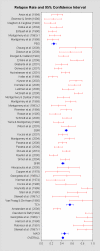Blue again: perturbational effects of antidepressants suggest monoaminergic homeostasis in major depression
- PMID: 21779273
- PMCID: PMC3133866
- DOI: 10.3389/fpsyg.2011.00159
Blue again: perturbational effects of antidepressants suggest monoaminergic homeostasis in major depression
Abstract
Some evolutionary researchers have argued that current diagnostic criteria for major depressive disorder (MDD) may not accurately distinguish true instances of disorder from a normal, adaptive stress response. According to disorder advocates, neurochemicals like the monoamine neurotransmitters (serotonin, norepinephrine, and dopamine) are dysregulated in major depression. Monoamines are normally under homeostatic control, so the monoamine disorder hypothesis implies a breakdown in homeostatic mechanisms. In contrast, adaptationist hypotheses propose that homeostatic mechanisms are properly functioning in most patients meeting current criteria for MDD. If the homeostatic mechanisms regulating monoamines are functioning properly in these patients, then oppositional tolerance should develop with prolonged antidepressant medication (ADM) therapy. Oppositional tolerance refers to the forces that develop when a homeostatic mechanism has been subject to prolonged pharmacological perturbation that attempt to bring the system back to equilibrium. When pharmacological intervention is discontinued, the oppositional forces cause monoamine levels to overshoot their equilibrium levels. Since depressive symptoms are under monoaminergic control, this overshoot should cause a resurgence of depressive symptoms that is proportional to the perturbational effect of the ADM. We test this prediction by conducting a meta-analysis of ADM discontinuation studies. We find that the risk of relapse after ADM discontinuation is positively associated with the degree to which ADMs enhance serotonin and norepinephrine in prefrontal cortex, after controlling for covariates. The results are consistent with oppositional tolerance, and provide no evidence of malfunction in the monoaminergic regulatory mechanisms in patients meeting current diagnostic criteria for MDD. We discuss the evolutionary and clinical implications of our findings.
Keywords: antidepressant medication; discontinuation; homeostasis; major depression; meta-analysis; oppositional tolerance; relapse.
Figures



References
Grants and funding
LinkOut - more resources
Full Text Sources

